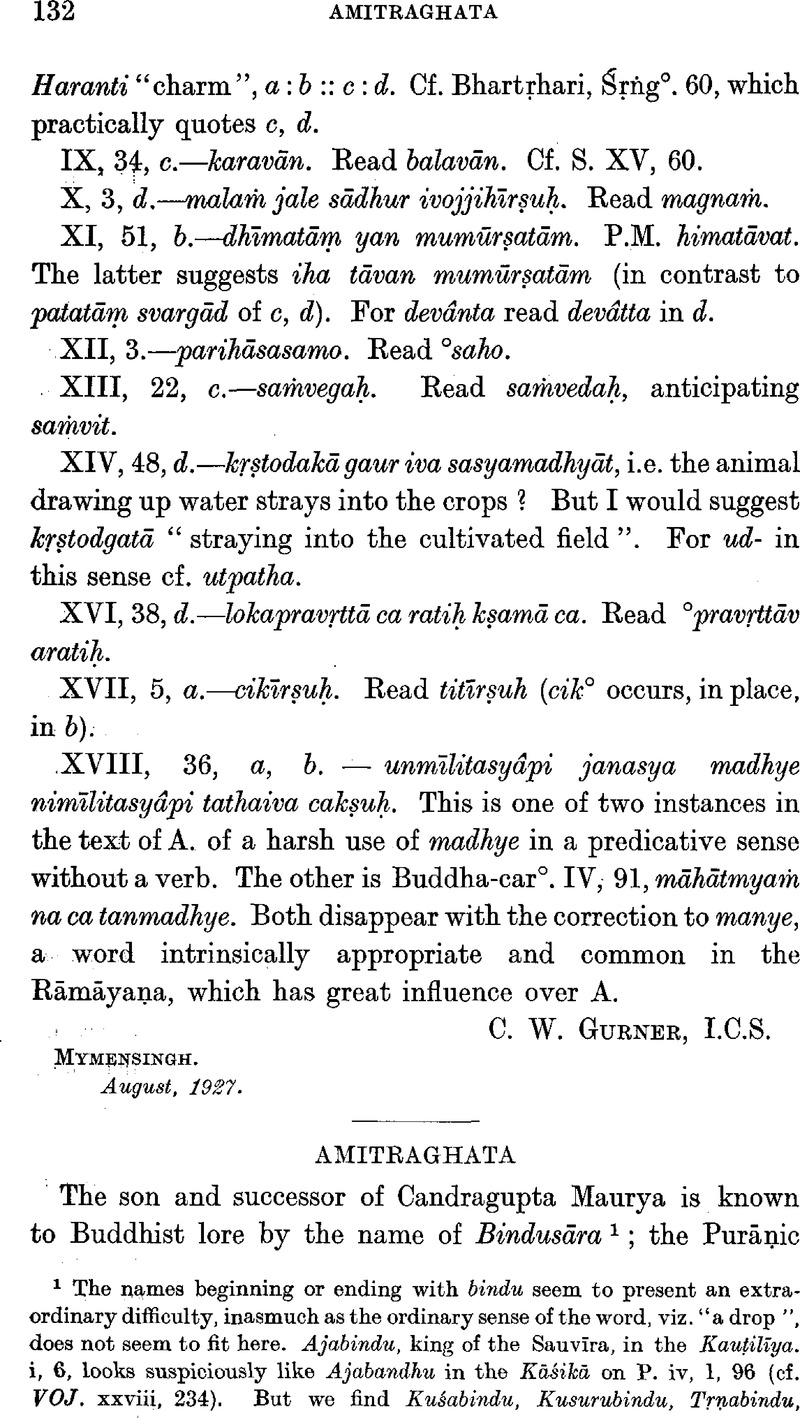No CrossRef data available.

page 132 note 1 The names beginning or ending with bindu seem to present an extraordinary difficulty, inasmuch as the ordinary sense of the word, viz. “a drop”, does not seem to fit here. Ajabindu, king of the Sauvīra, in the Kauṭilīya. i, 6, looks suspiciously like Ajabandhu in the Kāśikā on P. iv, 1, 96 (cf. VOJ. xxviii, 234). But we find Kuśabindu, Kusurubindu, Tṛṇabindu, Dvibindu, Śaśabindu, and, on the other hand, Bindunātha, Bindumatī, Bindurekhā, Bindusena, etc. Sometimes bindu (like indu, with which it of course, no etymological connexion) may mean “the moon”, though the dictionaries do not seem to give this sense; cf. Bindudeva as a name of Śiva.
page 133 note 1 Cf. CHI., vol. i, p. 495.
page 133 note 2 Indische Altertumskunde,2 ii, 222.
page 133 note 3 Indische Studien, xiii, 331.
page 133 note 4 Only after this had gone to print I became aware of the remark by Fleet, , JRAS. 1909, pp. 24, 426 sq.Google Scholar, which are mainly quite correct. The contradictory opinion of Professor Keith, ibid., 1909, p. 423 sq., is well founded and contains some apparent mistakes.
page 133 note 5 xiv, 67.
page 133 note 6 Either Seleucus I (d. 280 b.c.) or his successor, Antiochus I (280–261 b.c.). Concerning this there is a slight discrepancy in the CHI., vol. i, pp. 433 and 495.
page 134 note 1 Loc. cit., ii, 223.
page 134 note 2 ii. 1, 9 (C. 70); ed. Kramer, vol. i, p. 109.
page 134 note 3 By a strange coincidence Lassen, loc. cit. ii, p. 222, n. 7, and the CHI., vol. i, p. 495, n. 1, have both the slightly misspelt form 'Αλλιτροχδως.
page 135 note 1 The article, by ProfessorGawroński, , in the Rocznik Orjentalistyczny, ii (1925), p. 21 seq.Google Scholar, on Bindusāra and his suggested conquests is an able piece of work, but wholly hypothetical. Jain evidence—if so it can be styled—rather points to Candragupta having conquered the South. However, nothing but finds of inscriptions older than those of Aśoka will throw light on this dark period of Indian history.